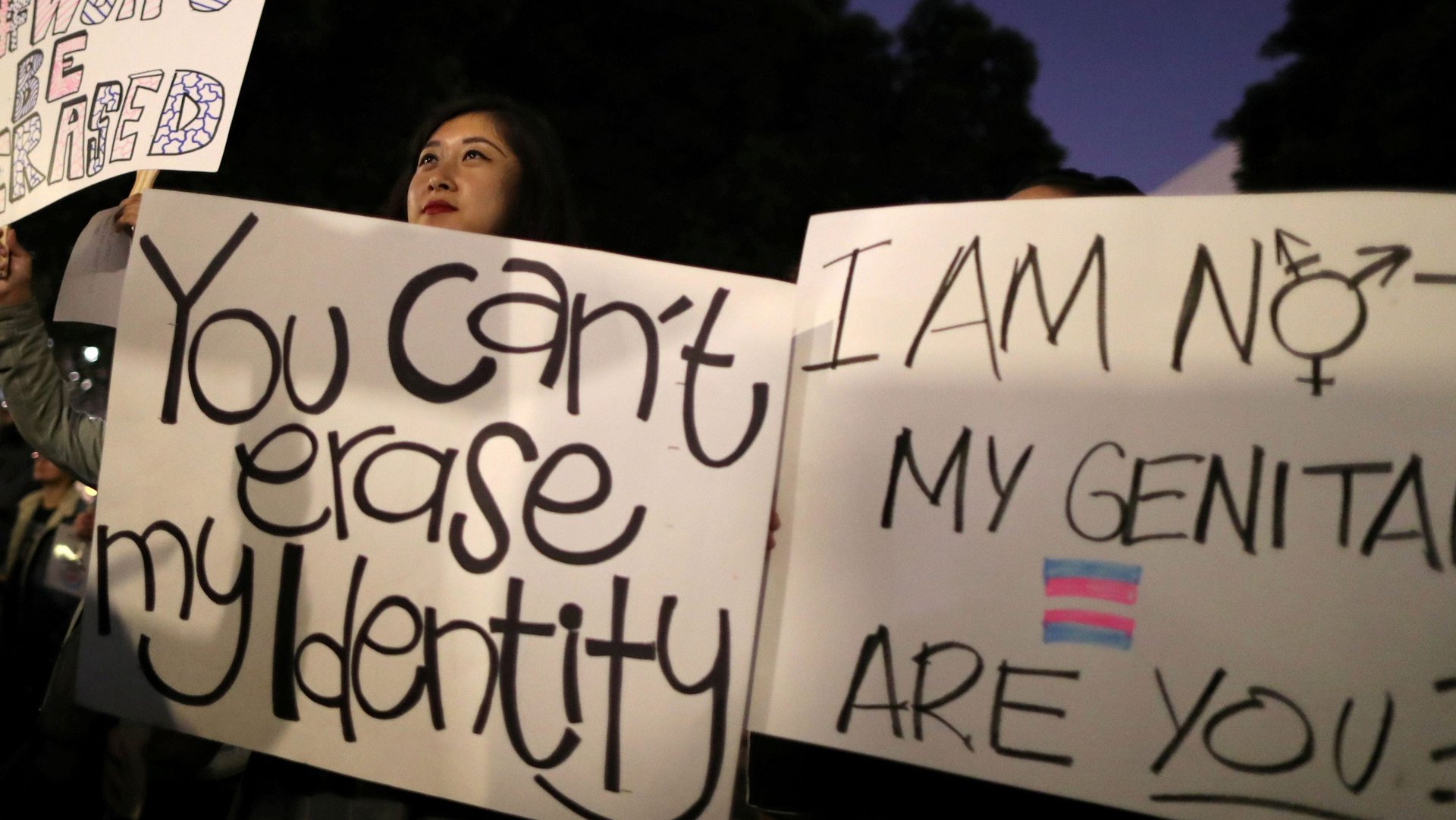Trump’s proposed definition of sex ignores all the science
The Trump administration wants to eradicate transgender rights, and is prepared to create an unscientific, government-sanctioned definition of sex to do so. That, at least, was implications of a leaked memo, published in part by the New York Times last Sunday (Oct. 21), which showed the Trump administration was considering defining both gender and sex as unchanging and determined by genitalia at birth.


The Trump administration wants to eradicate transgender rights, and is prepared to create an unscientific, government-sanctioned definition of sex to do so. That, at least, was implications of a leaked memo, published in part by the New York Times last Sunday (Oct. 21), which showed the Trump administration was considering defining both gender and sex as unchanging and determined by genitalia at birth.
The memo argued that gender should be determined “on a biological basis that is clear, grounded in science, objective and administrable,” though that very statement refutes basic science which says that biological sex is a spectrum, and gender is not the same as biological sex anyway.
Under the new policy, sex would be defined as either male or female and determined by the genitals that someone is born with. The memo added: “The sex listed on a person’s birth certificate, as originally issued, shall constitute definitive proof of a person’s sex unless rebutted by reliable genetic evidence.” The policy would essentially mean that transgender people don’t exist in the eyes of federal policy, and don’t have explicit civil rights protections. Regardless of the moral considerations, it’s scientifically absurd.
Millions of people aren’t born with standard male or female bodies: According to the latest research, this is roughly as common as having red hair. A survey of the medical literature published in 2000 by Anne Fausto-Sterling, professor of biology and gender studies at Brown University, found that around 1.7% of people deviate from the standard male-female dichotomy (pdf). (About 1% to 2% of people are redheads.) This estimate reflects those who don’t have XX or XY chromosomes, those affected by hormonal conditions that cause ambiguous genitalia (which can develop late in childhood), and those born with reproductive organs, or internal and external genitalia that are not typically male or female. According to Fausto-Sterling’s research, only around one or two of 1,000 total births result in genitalia surgery to meet either male or female norms, but far higher numbers differ from the sexual binary in some way.
In 2015, an article in Nature outlined the many ways in which biologists have shown that biological sex is a spectrum, and why genetics is no more a clear-cut determinant of sex than genitalia. “When genetics is taken into consideration, the boundary between the sexes becomes even blurrier,” writes Claire Ainsworth in the Nature article. “[N]ew technologies in DNA sequencing and cell biology are revealing that almost everyone is, to varying degrees, a patchwork of genetically distinct cells, some with a sex that might not match that of the rest of their body.”
Furthermore, it’s long been established that sex and gender are not interchangeable terms. Sex refers to the biological body, while gender refers to a sense of personal identity in the mind. Or, as the New York Times puts it, gender “originates between your ears, not between your legs.” This week, the American Academy of Pediatrics stressed the difference between sex and gender, and emphasized that it’s entirely normal to experiences changes in gender beyond the standard male and female norms.
The leaked memo claims that the administration’s concept of gender should be “grounded in science” and yet its proposals utterly ignore the credible evidence on sex and gender. It is the latest in a series of unscientific moves from an administration accused of conducting a war on science, and is a clear sign of a willingness to dismiss the truth in a bid to deny transgender rights.